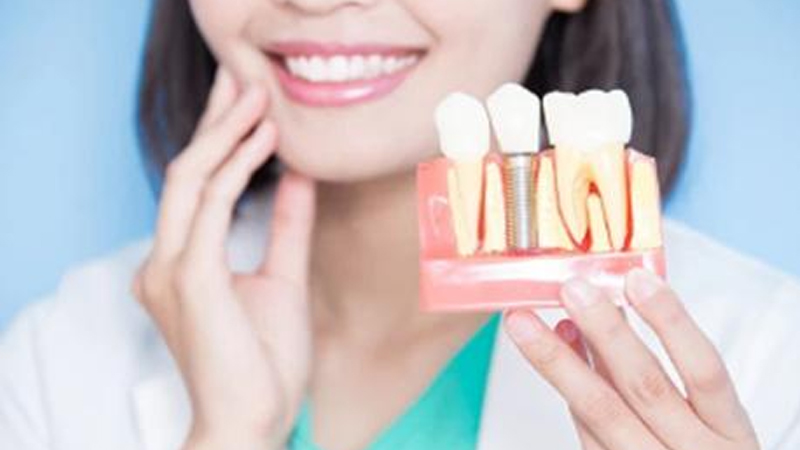
The dental laser is widely used in both non-surgical and surgical treatment of peri-implant infections. It is an effective adjunct to the treatment of peri-implant infections in terms of peri-implant disinfection, removal of infected material and promotion of wound healing. It is an effective adjunct to peri-implant infection treatment. Its efficacy is significant in the short term after treatment, but the long-term effects need to be further evaluated and require good oral maintenance and plaque control.
Peri-implant infections are classified as diseases caused by chronic periodontitis pathogenic microorganisms, which are biological complications of implant treatment and are one of the main manifestations of complications of implant treatment. For the prevention and treatment of peri-implant infections, in addition to the control of the above risk factors, the prerequisite for treatment is the prevention and removal of plaque biofilm, based on which treatment is carried out by non-surgical and surgical means. Therefore, the clinical approach is centered on peri-implant sterilization and debridement. There are many ways to treat peri-implant infections, and there is no definitive conclusion as to which is the most ideal. Traditional methods include mechanical debridement, chemical sterilization, antibiotic application, polishing of the implant surface, and surgical debridement. Mechanical debridement can be performed with titanium, carbon fiber, and plastic scrapers, as well as ultrasonic cleaning and sandblasting. The use of medication includes mainly the topical application of chlorhexidine gluconate, tetracycline, minocycline hydrochloride, etc.
In recent years, the use of dental lasers in the treatment of peri-implant infections has gained widespread interest. The laser as a light more easily reaches very narrow locations on the implant surface and allows selective stone and microbial removal without damaging the implant surface, which was previously difficult to achieve with mechanical debridement. A variety of dental lasers are available for the treatment of implant infections, including Er:YAG lasers, diode lasers, Er:Cr:YsGG lasers, Nd:YAG lasers and CO2 lasers. Lasers have different advantages in aiding peri-implant sterilization, removing infected granulation tissue, removing infected alveolar bone, and promoting peri-implant tissue healing.
、
Laser in the non-surgical treatment of peri-implant infections
When the peri-implant infection is mild, the inflammation is mainly limited to the peri-implant soft tissues, or the peri-implant alveolar ridge is mildly resorbed and the probing depth (PD) is less than 5 mm, the treatment can be non-surgical and focused on controlling the peri-implant microorganisms and removing the infected tissue. The diode laser is produced by a diode component and is commonly used in clinical practice at 810 and 980 nm. The hemoglobin and melanin components of the tissue are very sensitive to this type of laser. At the same time, the diode laser has a moderate penetration depth in the soft tissue and can be used for the removal of infected epithelium and inflammatory granulation tissue in the periodontal pocket during the non-surgical treatment of peri-implant infections. At the same time, its thermal effect is sterilizing and can be used for sterilization of peri-implant periodontal pockets. However, the duration of the positive effect observed clinically is short. In addition, when applying the diode laser for peri-implant non-surgical treatment, thermal damage to the peri-implant tissues due to its thermal effect should be prevented, as well as impaired blood supply to the alveolar ridge and osteonecrosis. The clinical use of the laser should be strictly controlled in terms of laser power setting, work mode selection and irradiation time control. Other dental lasers, such as the Nd:YAG laser and the CO2 laser, are less frequently used in the clinical treatment of peri-implant infections due to the risk of thermal damage to the peri-implant bone tissue and the implant surface.
Laser in the surgical treatment of peri-implant infections
When the peri-implant infection cannot be effectively controlled by non-surgical treatment, when the progressive resorption of the peri-implant bone (vertical and horizontal resorption) is assessed radiographically, and when the clinical indicators, such as the probing depth (PD) and the bleeding index (BI), do not improve significantly or continue to worsen, surgical treatment should be considered. The surgical treatment of peri-implantitis is divided into resective surgery, which is based on the removal of infected bone and elimination of periodontal pockets, and alveolar bone augmentation surgery, which removes infected tissue while performing guided bone regeneration (GBR) treatment. In either case, a thorough debridement of the peri-implant area and a thorough disinfection of the implant surface are required, while minimizing damage to the implant surface structure. The dental laser offers many advantages in the surgical treatment of peri-implantitis. The diode laser The diode laser is used in the surgical treatment of peri-implantitis to remove the infected soft tissues and disinfect the implant surface using the thermal effect of the laser.
The use of lasers in the non-surgical and surgical treatment of peri-implant infections offers significant advantages over conventional treatment modalities in terms of ease of handling, less treatment damage and improved sterilization. Positive results are seen within 6 months after treatment of peri-implant infections, but with longer follow-up periods, the results become unstable and in some cases recur to varying degrees. The Er:YAG laser has a more reliable track record in the literature, while the effects of the CO2 and diode lasers need to be further evaluated. In the future, an observational evaluation of the treatment effect for at least 1 year is needed. Of course, in addition to treatment, the patient's oral maintenance and plaque control are also very important, and the principles of plaque control need to be strictly implemented to ensure long-term stable treatment results.